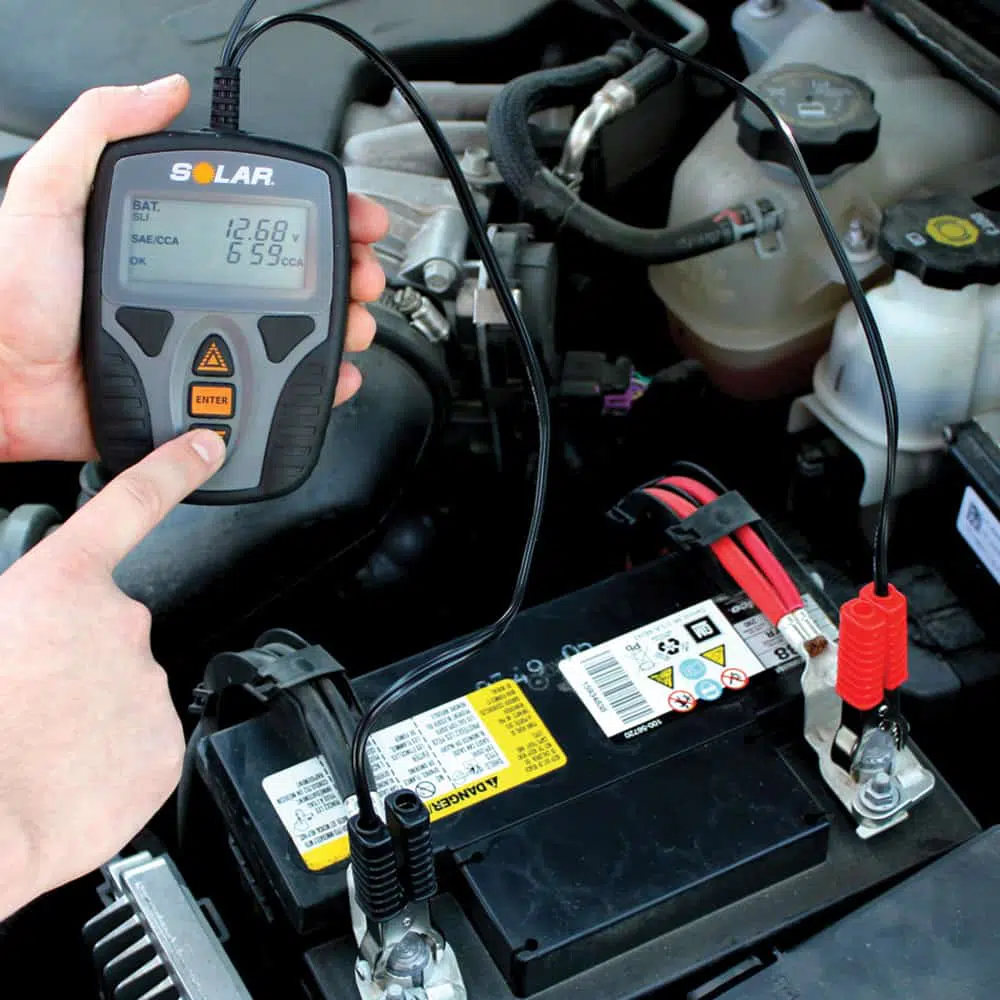Your vehicle’s battery is one of its most important yet often overlooked components. When it starts to weaken or fail, you could find yourself stranded in a no-start situation. According to the people at Clore Automotive, using a battery tester regularly lets you monitor your battery’s condition before problems arise. But understanding what the test results actually mean is key.
What Does a Battery Tester Check?
A digital battery tester evaluates several factors that indicate the battery’s overall state of charge and effective lifespan remaining. To that end, here’s a look at what most testers check:
State of Charge (Voltage)
This tests the maximum voltage the battery can sustain when fully charged, usually between 12.6-12.8V for modern lead-acid batteries. Low voltage likely means the battery needs recharging or replacing.
Battery Rating (Cold Cranking Amps)
The cold cranking amp (CCA) rating shows if the battery has enough power to start your vehicle’s engine in cold temperatures when amps are drained faster. Your tester compares the battery’s actual CCA capacity to its original rating when new.
Internal Battery Resistance
As batteries age, internal resistance increases, which prevents the optimal flow of current to start the engine and power accessories. Too much resistance is a sign of degraded plates and failing cells inside.
Load Testing
This simulates the high electrical current draw of your vehicle’s starter motor when cranking the engine to test if the battery has enough juice to cycle through multiple start attempts in severe conditions.
Types of Battery Testers
The two main types of battery testers check these factors in different ways:
Conductance Testers
These testers simply provide a pass/fail result using conductance for a decisive measurement of battery performance without discharging any power from the battery.
Load Testers
These apply an actual load to discharge the battery while measuring its voltage drop under the high amperage conditions of engine starting. This provides more data on the battery’s cold cranking ability and discharge capacity.
Understanding Common Battery Issues
Testers can identify several common causes of battery failure:
Sulfation
As batteries cycle through charge/discharge, lead sulfate crystals gradually build up on the internal lead plates over time, reducing surface area and capacity.
Electrolyte Depletion
For wet cell lead-acid batteries with removable caps, consistently low electrolyte fluid levels speed up degradation of the lead plates and reduces cranking performance.
Physical Damage
Severe vibrations from rough terrain can cause the positive plate grids inside to shed active material. Excessive heat also shortens battery lifespan.
Parasitic Drains
Internal electrical drains from accessories, ECUs and computers slowly discharge batteries over time. A conductance tester can reveal excessive parasitic loads.
Battery Test Results Interpretation
Most basic handhelds provide a simple color-coded pass/fail result that is easy to interpret:
- Green = Good Battery
- Yellow = Marginal Battery
- Red = Replace Battery
Advanced testers provide more specific cold cranking amps results, letting you know estimated battery percentage of original rated capacity remaining.
For example, a new battery rated at 600 CCA but now only testing at 300 CCA performance is at 50% health and so will need replacing soon.
Using a Battery Tester
Performing a battery test is straightforward. Simply connect the positive and negative tester leads to the corresponding battery terminals, making sure to attach the negative cable last to avoid sparks.
Enter the battery’s original CCA rating from the label and press the tester’s load button to simulate a high amperage drain while voltage is measured.
Conclusion
With a basic understanding of how battery testers work and how to interpret their results, you can take a proactive approach to replacing weak batteries before they completely fail and leave you stranded. Regular testing makes your car’s electrical system more reliable.
